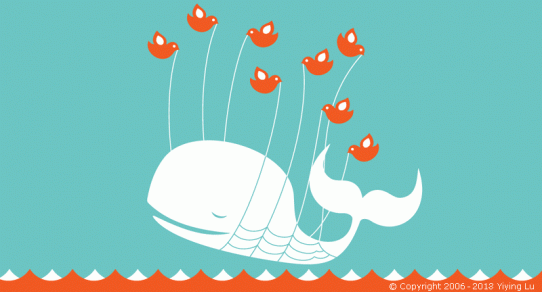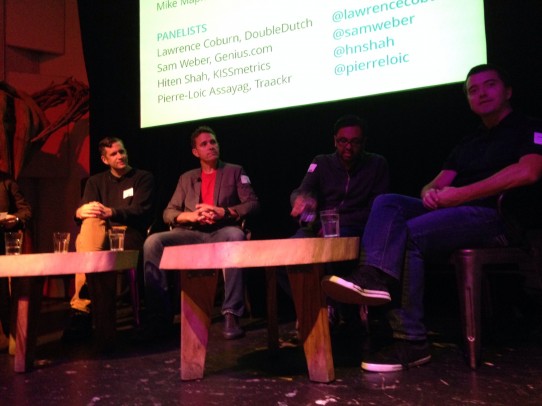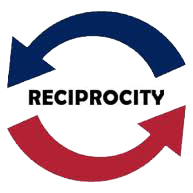The first online pseudonym I ever took for myself was “FreeK.” Yes, with the capital K at the end, and everything. My thin justification for that ‘edgy’ spelling was that if you wanted to, you could pronounce it “free-kay” like someone saying “freaky” with an accent. Don’t judge me too harshly; it was 1993, and I was 13 years old. Having discovered that Internet Relay Chat (IRC) was a magical technology where geographically disparate strangers could speak with relative anonymity, I was tasked with picking a username — much in the same way that the modern Internet denizen must select their Twitter handle. 13-year-old me had fewer concerns about the lasting impact of his nom de pépier, but admittedly that didn’t stop 30-year-old me from still being a smartass about it.
PR professionals are trusted to be caretakers of incredibly valuable brands. When we interact on behalf of a client, it’s understood that what we say and do reflects back on that client – for all intents and purposes, our words are coming out of their mouths, so we need to act responsibly. Just as often, though, we’re simply interacting as ourselves, whether it’s to swap jokes with industry contemporaries, share interesting news, or simply shout our fascinating thoughts into the ether. I’m speaking, of course, about Twitter, that marvelous social media equalizer that gives each of us the same 140 characters to act as cleverly or callously as we please.

The basics of how to behave on one’s personal Twitter account should, by now, be common knowledge in the professional world (even if one still sees occasional evidence that they’re not). I am not here to harangue anyone about the blurred lines between personal and professional personas; anybody in PR ought to understand that you need to be professional in both — especially in an industry driven by public interaction and relationships — maintaining one’s own brand takes just as much care as a client’s. My point of curiosity, instead, is this: if our online profiles are our brands, how do we come by our branding? In short, why do we pick the Twitter names that we do?
Based on my own anecdotal research, roughly 95% of us go the simple route, picking a handle that is directly derived from our real names. It’s a basic concept, of course — if we’re to establish ourselves as thought leaders, social butterflies, and other highly visible personalities, naturally we want our names out there, attached to our thoughts, standing behind our two cents whenever we chip them in. As with the rest of the world, including the likes of @tim_cook, @andersoncooper, and even @barackobama, most of my colleagues, contemporaries, and clients have Twitter handles that are simply their names (underscores or abbreviations notwithstanding). Simple, straightforward, memorable, and no explanation needed.
There are plenty of reasons not to go this route. Frequently, this is simply because one’s real-name handle is already taken. The Internet is a crowded place, and few want the stigma of imitation or “being late to the party” associated with a username like “@BobJones2.” Whatever the reason, however, picking a non-given name reflects a much more personal and conscious decision, much more in line with a brand. You’ve got just 15 characters to encapsulate some facet of yourself — so what will you pick? A favorite literary character? A frequent hobby? What is the element of your character that is so dominant that you have chosen to name yourself after it?
After doing a bit of digging, I discovered that, like myself, most of my colleagues with non-tradtional Twitter names (i.e. not their actual names) have a personal story behind their choices, typically one rooted in old real-world nicknames: names their friends and family gave them in school, or frequent pun-based alterations of their names that others have made. Branding by focus group, if you will. Like any brand, however, the double-edged sword is that once a brand becomes recognizable, you’re more or less compelled to keep using it.
My current Twitter name isn’t anything explicitly profane or offensive; I don’t profess a love of illegal drugs or antisocial behavior. It’s nothing bad, per se, but it’s questionable from a maturity standpoint. It’s irreverent at best, and that’s how I like to hope it’s interpreted — but, like so many others’, it’s “mine” now, and it’s been around long enough that several friends would blink if I were to drop it.
Could I rebrand myself if I needed to? Almost certainly. But the tongue-in-cheek nature of my brand is one I try to support with wry messaging, and I find it makes a more memorable first impression than a simple @MyName selection. Besides, I’ve checked on the Twitter names with my actual name on them, and there’s at least 7 of them. So far, I’m the only one using my particular Twitternym, so I’ve got that market segment locked up.
If you liked this post, you can follow me on Twitter (just not at @JesseHenning ’cause that’s not me).




















